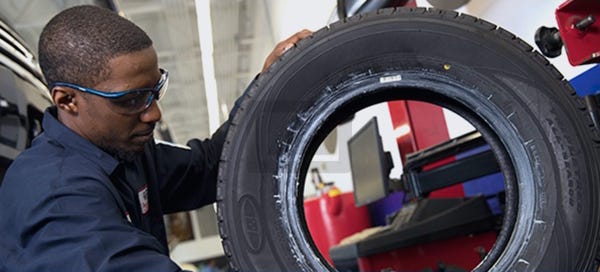Raise Your Experience: Trust Morris Tires for GMC Tires Service
Tire Service: The Influence of Climate Conditions
When it concerns making sure ideal efficiency and security when traveling, understanding the effect of climate conditions on tire service is essential. From scorching heat to icy roads, each climate aspect can dramatically influence tire capability and total driving experience. By delving right into the impacts of varying weather on tires, motorists can acquire valuable insights that may enhance their car's efficiency and longevity. In this conversation, we will certainly check out the intricate connection in between climate condition and tire service, losing light on the value of weather-specific tire upkeep methods and factors to consider.
Heat and Tire Efficiency
When revealed to high temperature levels, tires experience adjustments in efficiency that can significantly affect car safety and security and handling. The heat generated from long term driving or hot climate conditions causes the tire rubber to soften, leading to minimized tread life and boosted wear.

Cold Climate Results
Cold weather condition conditions can have a significant influence on tire performance and safety. In cold weather condition, tires might additionally lose air stress much more quickly, which can impact dealing with and gas efficiency.
To mitigate the impacts of chilly weather condition on tires, it is critical to frequently check tire pressure and inflate them to the producer's recommended degrees. Making use of winter season or all-season tires made for winter problems can also enhance grip and grip on icy or snowy roads. Appropriate tire maintenance, including routine evaluations for wear and damages, becomes a lot more critical during chillier months to guarantee optimum performance and security.
Rainy Issues Influence
Throughout rainy conditions, tire performance and safety can be dramatically influenced by the wet roadway surface areas and lowered presence. The step pattern of tires plays an essential function in maintaining traction on wet roads. Tires with worn-out footsteps are more prone to hydroplaning, where a layer of water accumulates in between the tire and the roadway surface area, bring about loss of grip. To combat this, drivers should frequently check their tires for ample step deepness and take into consideration investing in tires specifically designed for wet conditions.
Additionally, stormy weather condition can likewise lower visibility, the original source making it challenging for drivers to see the roadway ahead plainly (GMC Tire Service). In such problems, it is important to adjust driving speeds accordingly and keep a risk-free adhering to range to enable for abrupt quits. Appropriately inflated tires can also help in maintaining control on damp roadways by offering better handling and grasp
Snow and Tire Safety
Snow-covered roadways pose one-of-a-kind challenges for chauffeurs, emphasizing the relevance of proper tire option and maintenance. When driving in snowy conditions, having the right tires can make a significant distinction in security and performance. Winter months tires are made with unique rubber substances and step patterns to supply better traction on snow and ice compared to all-season tires. The much deeper treads and sipes of winter months tires aid hold the roadway better, lowering the threat of sliding and sliding.

It is essential her comment is here to comply with maker instructions when making use of and mounting tire chains to stop damages to the tires and automobile. By picking the best tires, keeping correct inflation, and considering extra traction aids like tire chains, motorists can enhance their security when browsing snow-covered roadways.
Weather-Related Tire Upkeep
When encountered with numerous climate condition, proper tire upkeep comes to be a vital facet of lorry safety and security and efficiency. Weather-related tire upkeep incorporates a variety of methods intended at making sure optimal tire feature and longevity in different weather condition scenarios. One key element of weather-related tire upkeep is tire stress law. Varying temperature levels can trigger tire stress to differ, impacting grip and gas efficiency. Routinely checking and readjusting tire pressure according to maker suggestions is crucial for safe driving in changing weather. Furthermore, tire tread deepness plays a significant duty in managing various weather components. Tires with adequate walk deepness supply better grasp on wet or icy roadways, reducing the risk of hydroplaning or skidding. Examining tire tread on a regular basis and changing tires when walk wear reaches a particular depth is crucial for keeping traction and stability in adverse climate. By prioritizing weather-related tire maintenance, motorists can boost safety, enhance automobile efficiency, and lengthen the life-span of their tires.
Conclusion
In conclusion, climate conditions have a substantial impact on tire efficiency and safety and security. From warm impacting tire stress and put on to chilly weather condition decreasing grip, it is important to take into consideration the weather when preserving and using tires.
In this discussion, we will check out the intricate connection between climate problems and tire service, losing light on the significance of weather-specific tire upkeep methods and considerations.
